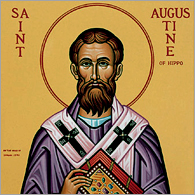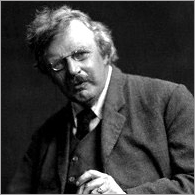 (Originally posted 16 December 2010)
(Originally posted 16 December 2010)
I mentioned on this blog that, unfortunately, there are some Catholics out and about noisily claiming that the view that the earth is the immobile center of the universe is a core part of the Catholic faith. I have already explained elsewhere why this view is untenable, but there are a few additional aspects of this issue that I want to examine over the course of the next weeks.
Much is made in the new geocentrist circles about Pope Leo XIII’s dictum that the exegete of Scripture is, “not to depart from the literal and obvious sense, except only where reason makes it untenable or necessity requires” (Providentissimus Deus 15).
From this papal teaching, modern geocentrists conclude that we are bound to what they claim is the “literal” interpretation of certain passages of Scripture, namely, that the sun revolves around the earth. But this claim is undermined by this admission made by a prominent geocentrist writer:
the most important fact that is invariably missed by modern biblical exegetes who advocate heliocentrism is that Scripture’s phenomenal language (e.g., the “sun rises” or the “sun sets”) also applies to the geocentric system. In the geocentric system the sun does not “rise” or “set”; rather, it revolves around the Earth. When the geocentrist sees a beautiful sunset he does not remark: “Oh, what a beautiful revolution of the sun,” just as the heliocentrist does not say: “Oh, what a beautiful rotation of the Earth.” The geocentrist knows that the sun “rises” or “sets” only with respect to the Earth’s horizon, and therefore, reference to a “rising sun” in Scripture is just as phenomenal in the geocentric system as it is in the heliocentric. (Galileo Was Wrong, vol 1, p. 226).
Here the geocentrist seems not to realize that he has actually dismantled the geocentric appeal to Pope Leo XIII’s dictum concerning the “literal and obvious sense” of Scripture. By admitting that both “geocentrists” and “heliocentrists” view these passages of Scripture as utilizing phenomenological language, he therefore admits that neither of them take these words in their “literal and obvious” sense. The literal and obvious interpretation of “the sun rises” or “the sun goes down” is that it literally goes up or down, not that it revolves around the earth and so it only appears to go up, or that the earth rotates on its axis so that it only appears to go down. There is nothing “literal and obvious” about taking the phrase “the sun rises” or “the sun goes down” to mean that the sun revolves or that the earth rotates. The words by themselves do not convey either meaning.
So, both “geocentrists” and “heliocentrists” interpret these words in light of what they believe to be the physical motions of various heavenly bodies. And even the geocentrist admits that the words themselves do not convey the details of the underlying physical reality. From the words themselves, one cannot determine which is correct – the sun revolves around the earth or the earth revolves around the sun. That information simply is not there.
A typical geocentrist response might be that some of the passages cited in support of geocentrism contain phenomenological language, but not all of them do. However, an examination of the passages cited reveals that, in fact, they do all employ phenomenological language. Passages like 2 Kings 20:11 and Isa 38:8 describe the movement of the sun’s shadow on a sundial, not the movement of the sun itself. And another prominent passage claimed for geocentrism, Psa 19:5-6, speaks of the sun coming forth from its “tent” and its “rising” – again, admitted above to be phenomenological language. [Please see my Addendum and correction at the end of this essay.]
Both the geocentrist and non-geocentrist agree that these passages are not to be taken literally, but represent the language of appearances, the phenomena that were visible to the observers. But once the geocentrist admits this, he can no longer appeal to these passages as if they literally describe the underlying physical phenomena. And once they no longer literally describe physical phenomena, then no case can be made from them concerning “the essential nature of the things of the visible universe” nor can any claim be made to Leo XIII’s dictum concerning the literal sense of Scripture.
But the geocentrist has a ready reply. What, then, of the teaching of Trent, Vatican I, and Leo XIII that we must never interpret Scripture contrary to the unanimous consent of the Fathers?
At least one geocentrist has fixated exclusively on the words of a selected sentence of the First Vatican Council and claimed that, on that basis, any view expressed by the Fathers, even if they do not cite Scripture, even if they make no indication that it is a matter of faith and morals, falls within the sphere of the “unanimous consent” to which we are bound (see here). It is bad enough that this ignores the previously section of Vatican I that specifically mentions “faith and morals”. But it also ignores the clarification that Pope Leo XIII made when discussing both Trent and Vatican I:
His teaching, and that of other Holy Fathers, is taken up by the Council of the Vatican, which, in renewing the decree of Trent declares its “mind” to be this – that “in things of faith and morals, belonging to the building up of Christian doctrine, that is to be considered the true sense of Holy Scripture which has been held and is held by our Holy Mother the Church, whose place it is to judge of the true sense and interpretation of the Scriptures; and therefore that it is permitted to no one to interpret Holy Scripture against such sense or also against the unanimous agreement of the Fathers.” (Providentissimus Deus 14; my emphasis).
It is only in matters of faith and morals that the unanimity of the Fathers binds. This is the teaching of Trent, Vatican I, and Leo XIII.
Now, keeping these two points in mind, we progress to Providentissimus Deus 18 where Pope Leo XIII explicitly states that in areas where the writers of sacred Scripture utilize “more or less figurative language, or in terms which were commonly used at the time, and which in many instances are in daily use at this day, even by the most eminent men of science. Ordinary speech primarily and properly describes what comes under the senses”, the Holy Spirit “did not intend to teach men these things (that is to say, the essential nature of the things of the visible universe), things in no way profitable unto salvation”
Therefore, both the appeal to Pope Leo XIII’s reference literal sense of the text and the appeal to a supposed unanimous sense of the Fathers fails to establish any obligation on a Catholic to interpret various passage of Scripture in support of geocentrism.
I have already touched upon the events of the seventeenth century in connection with the Galileo case and have explained why I do not believe that even those official ecclesiastical actions constitute a binding of Church to geocentrism as a matter of faith. I hope to return to address some details of those actions in future postings. But to summarize here:
Since 1) it is in matters of faith and morals that the Church exercises her authentic magisterium and 2) it is only on matters of faith and morals that the unanimity of the Fathers may be invoked as binding and 3) Pope Leo XIII and Pius XII made absolutely clear that the Holy Spirit “did not intend to teach men these things (that is to say, the essential nature of the things of the visible universe), things in no way profitable unto salvation”, therefore it cannot be said that the Church ever taught geocentrism as a matter of faith in her ordinary magisterium. And it is admitted even by the geocentrists that she has never done so in her extraordinary magisterium. Geocentrism is not now, nor has it ever been, a part of the Church’s ordinary magisterium (on this, see also Jeffrey Mirus, Galileo and the Magisterium: a Second Look)
[ Addendum:
It has been pointed out that the specific argument I used in the first edition of this essay with regard to Joshua 10:13—namely, that the sun is said to go “down” demonstrates that the biblical author employed phenomenological language—is incorrect because the Hebrew text does not actually include the word “down”. This is true, but the problem with this counter-argument is that it ignores that the word that is used, bô‘ (בּוֹא , “enter”), “always means ‘set’ when used of the sun” (A Catholic Commentary on Holy Scripture, p. 285; see Gen 15:12, 17; 28:11; Exod 17:12; Exod 22:26; Lev 22:7; Deut 24:13, 15; Jos 10:13; Judg 14:18; Judg 19:14; 2 Sam 2:24; 3:35; Ecc 1:5; Isa 60:20; Jer 15:9 (figuratively); Amo 8:9; Mic 3:6 (figuratively). The scholarly Brown-Driver-Briggs Hebrew lexicon defines the word thus, “of sun, set (go in, enter . . . opposed to יצא go forth, rise)” (my emphasis).
This highlights the phenomenological nature of this language. In English we speak of the sun “rising” and “setting”. The ancient Hebrew in both prose and poetry spoke of the sun “going forth” and “going in”. But “rising”, “setting”, “going forth” and “going in” with respect to what? With respect to the horizon, of course. And again, once the horizon is the frame of reference for a description of the sun’s course the geocentrist cannot insist that it describes literal astronomical motions, for even in their own system they would have to admit that the sun does not literally “go forth” from one horizon and “go in” to the other in its continuous orbit around the Earth. As Bob Sungenis himself has admitted, “The geocentrist knows that the sun ‘rises’ or ‘sets’ only with respect to the Earth’s horizon, and therefore, reference to a “rising sun” in Scripture is just as phenomenal in the geocentric system as it is in the heliocentric (GWW1, p. 226; emphasis mine). Well the same exact thing may be said about the Hebrew idiom of speaking of the sun “going forth” and “going in”, which also is clearly, “with respect to the Earth’s horizon”. This is phenomenological language and as Pope Leo XIII insists, the Holy Spirit did not intend to teach anything about the “essential nature of the things of the physical universe” through the use of such phenomenological language.
In this vein I’d have recourse to another phenomenon that has been enlisted by geocentrists, namely, the Miracle of the Sun at Fatima. At Fatima, tens of thousands of people saw this event, as described by journalist Avelino de Almeida: “Before the astonished eyes of the crowd, whose aspect was biblical as they stood bare-headed, eagerly searching the sky, the sun trembled, made sudden incredible movements outside all cosmic laws — the sun ‘danced’ according to the typical expression of the people.” http://en.wikipedia.org/wiki/Miracle_of_the_Sun
Here we have another miracle concerning the sun (and let me note at the outset that I do consider both the Fatima event and the event recorded in the book of Joshua to be miracles). The eyewitnesses indicated that from their vantage point the sun moved. But the fact is that this was not a universal phenomenon. It was a localized apparition. We know this because the only people who saw this phenomenon were those at Fatima and the Holy Father in Rome. No one else in the world reported witnessing this event. But the language used by the witnesses to describe the miracle, by itself, does not tell the reader whether this was a localized apparition or a universal event.
And this is precisely the point I was making in the essay—that is the nature of phenomenological language. To return to the text of Joshua, we can see that were this a localized apparition rather than a universal event the language would be the same. A poster on the Catholic Answers Forum put it well:
(1) If there was a natural explanation, then it wouldn’t strictly be a miracle. (2) It certainly was a miracle. (3) In fact I believe it was the same sort of miracle that took place at Fatima. Note, however, that in neither case is it necessary to assume that either the earth or the sun actually departed in any way from their ordinary motion. Why? Because in neither case were these miracles witnessed by the entire world. The miracle at Fatima was witnessed only by those present at Fatima, and by the Pope in Rome. Not a single other person in the entire world reported seeing the sun dance and fall towards the earth that day, which is a huge indication that the motion of the sun at Fatima was a localized vision, not a true physical displacement. Likewise with the miracle of Joshua: nobody else in the entire world reported seeing the sun stand still (or refuse to rise) for 24 hours. Not a single pagan culture existing in the world at that time recorded that event in their history. You know what that tells me? That Joshua’s miracle of sun was a localized apparition, not a true physical cessation of any celestial motion. Now, am I denying that God could have moved the heavenly bodies in such a miraculous manner, if He had so chosen? No, I’m not denying that. I’m simply saying that, even though He could have, it certainly doesn’t look like He did. Instead, as usual, He chose to be significantly more subtle. (http://forums.catholic.com/showpost.php?p=6714255&postcount=138)
Two counter-arguments may be addressed briefly by way of anticipation. First, I anticipate that my reply will elicit yet another exaggerated appeal to a supposed “unanimous consent of the Fathers” on Joshua 10:13. The main thing to keep in mind when discussing this matter of the Fathers viz-a-viz geocentrism is that, as Popes Leo XIII, Pius XII, and John Paul II have made clear, geocentrism is not a matter of faith. Nor is it ever presented as such by any of the Fathers of the Church. The same writer on the Catholic Answers Forum summarizes well:
…providing quotes which prove that the Church Fathers personally held geocentrism (which is all John Salza does) is not the same as providing evidence that they held it to be a a [sic] revealed truth of the Christian faith. In fact, none of the Church Fathers (much less all of them) ever made such a claim. Again, let me point out that when Saint Thomas argues for geocentrism in the Summa, he argues based on the observations of a natural scientist and a pagan: Ptolemy. Not a single Church Father. Not a single passage of Scripture. Ptolemy. Geocentrism is a question for natural science, not a truth of the Catholic faith. (http://forums.catholic.com/showpost.php?p=6714246&postcount=135)
Second, there are those who claim that various alleged accounts of a “missing day” in certain ancient cultures and even “proven” by NASA. This notion was popularized by one Harry Rimmer in 1936. Rimmer put forward no substantial evidence for his assertions and there as been much written subsequently to undermine his credibility. See here, here, and here, for just a few sources. As for the various accounts brought forth from other cultures, any accounts of an allegedly common event would have to be documented as accurate and shown to present the event as having occurred on exactly the same day, otherwise the “evidence” would be useless to establishing anything more than a local apparition. Suffice to say that if one examines these alleged witnesses closely, it turns out that they are highly variable and conflicting. Thus their combined testimony does nothing to establish the events related by Joshua 10:13 as a global and indeed cosmic event.
As the author of Galileo Was Wrong states:
God’s omnipotence has no limits. There are innumerable ways God can accomplish the task at hand if and when the normal laws which govern the universe are set aside to make room for God’s divine ingenuity (GWW2, p. 66).
That is correct and thus a Catholic is not bound to any specific understanding about how God wrought the miracle related in Joshua 10:13f. But this passage by no means necessarily implies, let alone proves, a geocentric universe. ]



